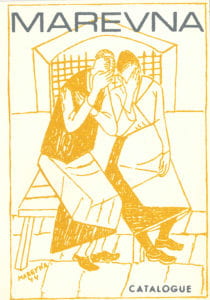Nazhrat Iqbal was a Special Collections & Archives Intern over the summer, part of the Interns on Campus initiative.
The Special Collections and Archives has a wide selection of resources, covering many different subjects that is open to all students, no matter what your degree or studies may be.
There were many topics I enjoyed exploring while working in the archives but as a student of sociology, I was naturally curious about the papers on Fascism by Victor Seidler, who also discussed sexuality, anarchism, the political climate of Chile in 1973, etc. These papers highlighted Fascism in London; I find this particularly interesting as while studying this topic in sociology, fascism is always tied to countries like Russia, Nazi Germany or Mussolini’s Italy that are all historic for its totalitarianism but hasn’t been explored in smaller and less obvious communities like London.
Siedler had collected a number of Race Today Magazines which offered different experiences of People of Colour, telling stories of the racism they suffered. I was very curious about how Fascism impacted the South-Asian communities, a community I grew up in and am a member of. It’s not often that archives would have any history or material referencing this race group and I was eager to see how the community has changed and by what influences. The magazines informed the discriminations South-Asian people experienced at work, being restricted to cheap labour and excluded from better skilled and higher paying work, which was unsurprising given the works of fascism. The magazines also noted Race Relations Act was not developed to prohibit racial discrimination, however it was passed when Black members of the US community reacted with violence to their own abuse and demanded change be made to their treatment. The government only acted on change when they were concerned about their reaction of POC, not to prevent further discrimination.
It’s not to say that it isn’t interesting to focus on the common and large scale examples of Fascism. There was on particular book called the Soviet Cinema which was tailored to inform readers outside the USSR how superior Russia was. It was one of the most amusing things I’ve read as their intentions to promote the greatness is so apparent; according to the book, Russian news-reel presented ‘a country which creates new material and human values.’ It also claims Soviet Cinema is able to capture the ideals of the Lenin and Stalin party and was devoted to art rather than commercialism of the Western Cinema. In Russia, film represented the national economy and was a means of reinforcing socialisation. It wasn’t before reading this book that I realised how monitored cinema was in Russia as the text claims a large part of employees in this industry received council from Stalin. This reminded me of a documentary I watched called Icarus, which stated that Putin developed an illegal doping programme for athletes because each time Russia would achieve a medal in the Olympics, his popularity would increase; perhaps the achievement of cinema had the same effect on Stalin’s popularity.
Exploring the archives, I was able to learn quite a bit on Russian Avant-Garde. My first day at Special Collections, I was given MAKE Magazines where I become increasing interested in an artist called Marevna and her unconventional use of cubism. I have no prior art background but that did not restrict me from learning about other RAG artists, such as Natalya Goncharova. From the books in the archive, I learnt that Goncharova held the belief that ‘painting could do everything sculpture could not’ and had a significant role in developing the group ‘Knave of Diamonds’. The group was said to be inspired by the early work on Picasso and curiously, I checked the archives to compare Picasso’s work and what techniques they may have taken from him. It was also enjoyable when I had the opportunity to visit the Natalya Goncharova exhibit at Tate Modern as I had the luxury to see all her art work in real life, as I was used to only seeing it in books. Avant-Garde and art is a new subject for me and it was great to be introduced to in through SCA. There were other forms of AG which caught my interest; suggest as Japanese AG and the way art was influenced by Post-Hiroshima.
-Nazhrat Iqbal




Leave a Reply